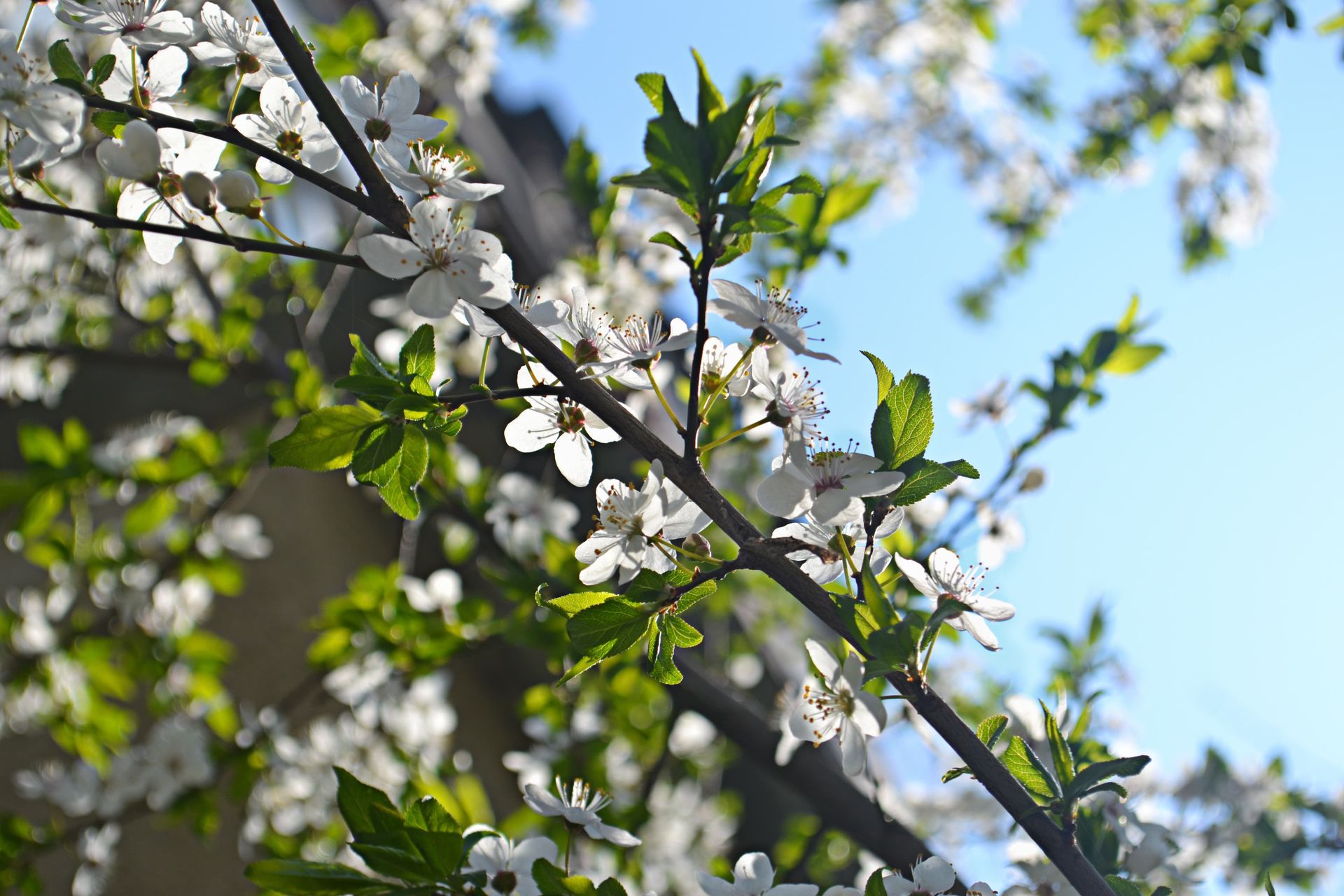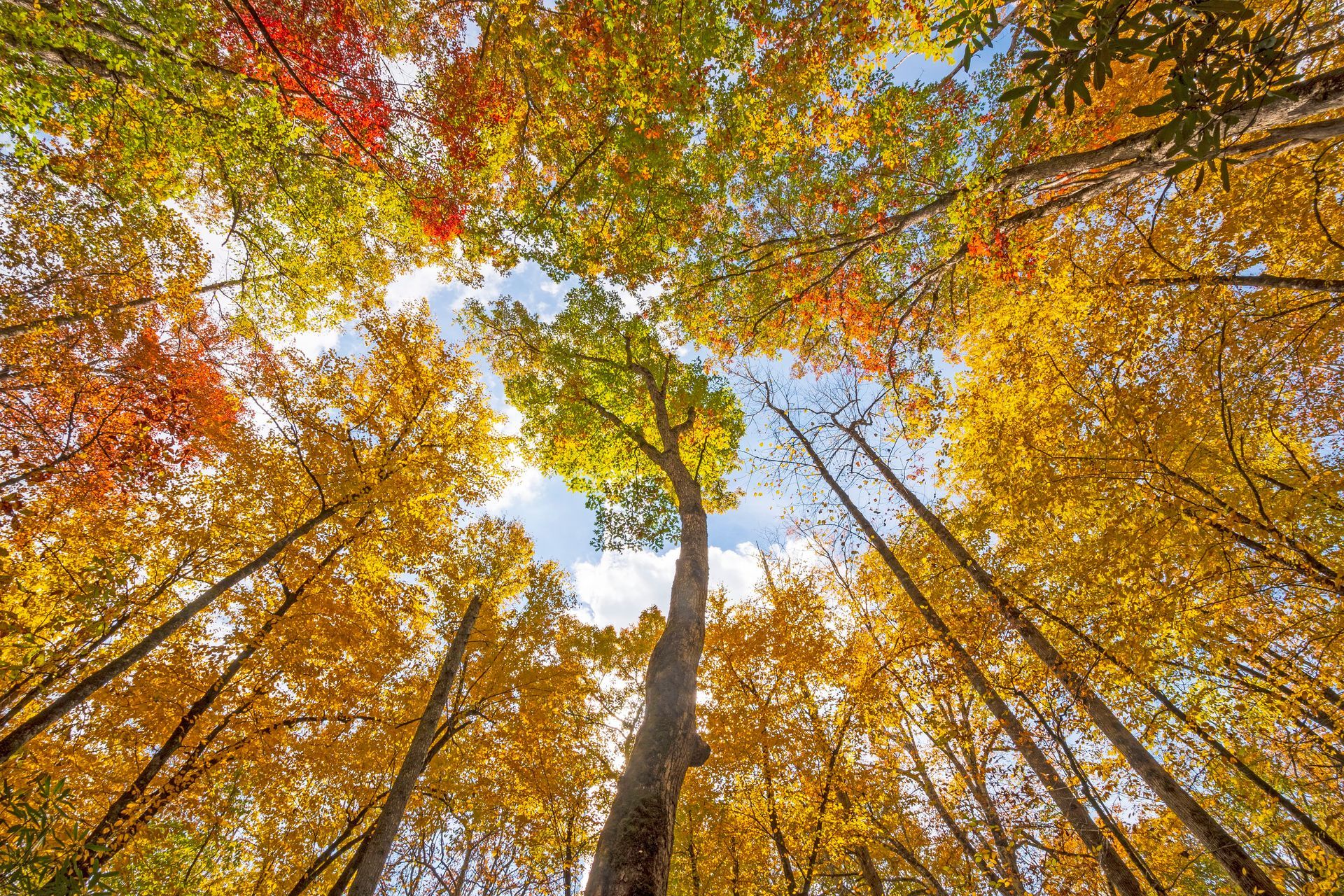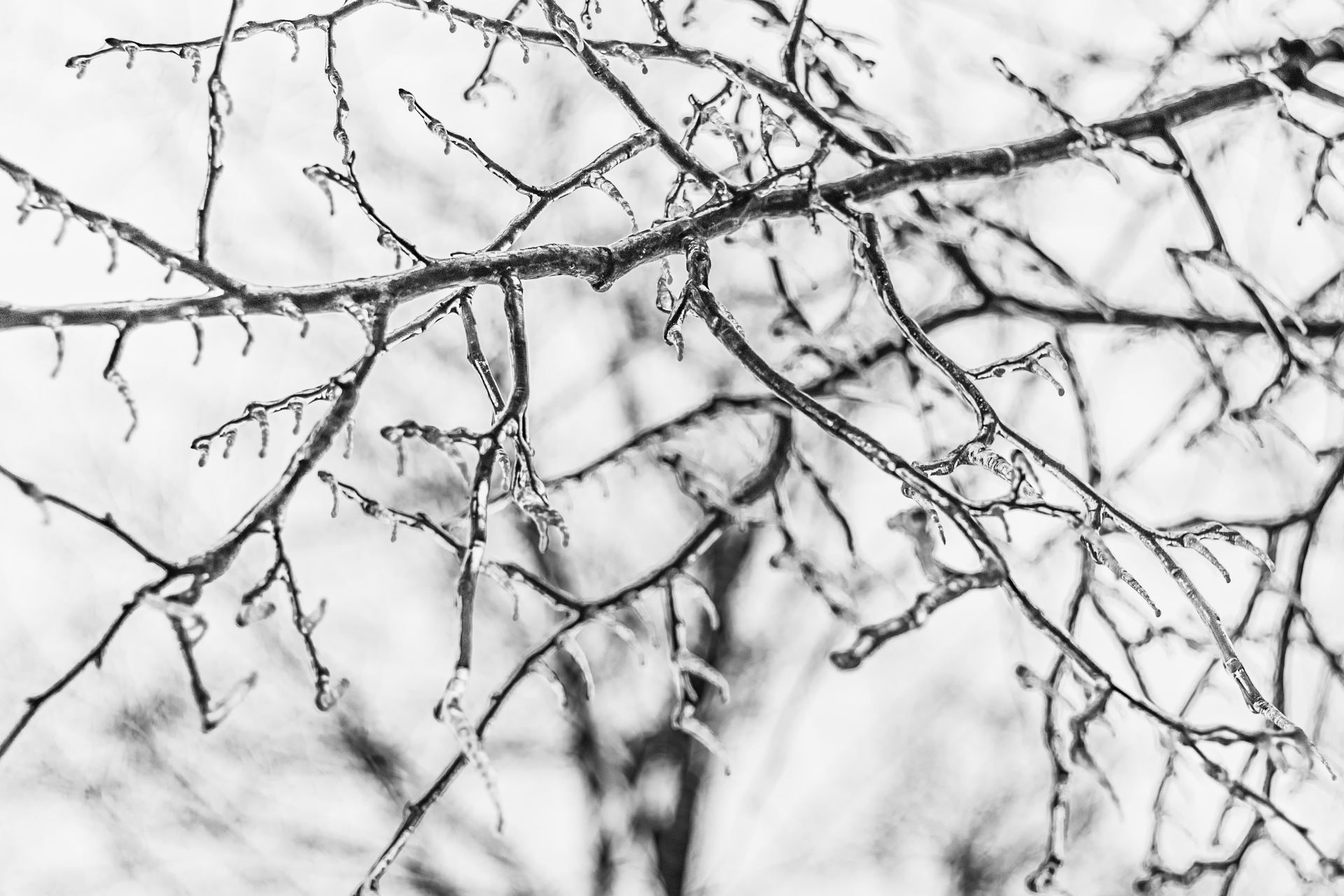Tree Service Wilkes Barre PA
Tree Trimming: A Seasonal Guide
Trees are integral to our environment. They add beauty, provide shade, and enhance the landscape. Proper tree care and maintenance is essential to preserve your trees' health, appearance, and longevity. Tree trimming is one common maintenance service to care for your trees. In Wilkes-Barre, PA, it's crucial to understand the optimal time for tree trimming to ensure your trees thrive throughout the year. This guide will highlight the benefits of proper tree trimming, and offering essential tips for each season.
By following this comprehensive guide, you will be better equipped to maintain the health and aesthetics of your trees. This helps protect your property from damage caused by overgrown or weakened branches. This seasonal guide will help you keep your trees in excellent condition all year long.
Importance Of Tree Trimming
Tree trimming is a crucial aspect of tree care and landscape management. Regular trimming helps maintain the structural integrity of trees. Without trimming, you risk branches falling or causing damage to property, utility lines, or even posing a hazard to people. By removing dead or weak branches, trimming can also prevent the spread of disease and pests, thus promoting the health of your trees.
Moreover, tree trimming plays a significant role in enhancing the appearance of your trees and landscaping. Well-maintained trees have a more balanced and visually appealing shape. This shape contributes to a pleasant outdoor environment. Proper trimming encourages healthy growth. This means your trees to grow stronger and more resilient to adverse weather conditions.
Get Instant Quote
Contact Us
We will get back to you as soon as possible.
Please try again later.
Overview of the Seasonal Guide to Tree Trimming
This seasonal guide is designed to provide you with essential information on when and how to trim your trees in Wilkes-Barre, PA, based on the changing conditions throughout the year. Each section will focus on a specific season, outlining the benefits of trimming during that time, the types of trees that should be trimmed, and practical tips to ensure successful tree maintenance.
By following this guide, you will gain a better understanding of how to care for your trees during each season, enabling you to promote their long-term health, beauty, and structural integrity. Additionally, our guide will help you navigate the do's and don'ts of tree trimming, ensuring you maintain your trees responsibly and effectively.
So, whether you're looking to enhance the aesthetics of your property, improve the safety of your outdoor space, or simply support the health of your trees, our seasonal guide will equip you with the knowledge and insights needed to achieve your tree care goals in Wilkes-Barre, PA.
Benefits of Proper Tree Trimming
Proper tree trimming safeguards the health and appearance of your trees. It also provides additional benefits. Here are some of the key benefits of regular and appropriate tree trimming.
Enhanced Safety
By removing dead, damaged, or weak branches, you minimize the risk of accidents caused by falling limbs or debris during storms and high winds.
Improved Tree Health
Proper trimming promotes better air circulation and sunlight penetration, which in turn supports healthy growth and reduces the likelihood of disease or pest infestations.
Increased Property Value
Well-maintained trees contribute to an attractive and welcoming outdoor space, potentially increasing the curb appeal and value of your property.
Energy Efficiency
Strategically trimmed trees can provide more effective shade during hot summer months, reducing the need for air conditioning and lowering energy costs.
Environmental Benefits
Healthy trees are more effective in absorbing carbon dioxide, producing oxygen, and providing habitat for various wildlife species.
By incorporating regular tree trimming into your landscape maintenance routine, you can enjoy these benefits while also protecting and enhancing the long-term health and beauty of your trees in Wilkes-Barre, PA.

Spring Tree Trimming
As the season of renewal and growth, spring is an ideal time to assess your trees and carry out any necessary trimming tasks. This section will explore why spring is a good time for trimming, the types of trees that benefit from spring trimming, and tips to ensure successful tree maintenance during this season.
Why Is Spring a Good Time for Trimming?
Easier assessment
With trees still relatively bare from winter, it's easier to inspect their structure and identify any problematic branches that may require trimming.
Less stress on trees
Trimming trees before they start to produce new leaves and shoots allows them to direct their energy and resources to new growth and recovery, reducing the stress caused by pruning.
Improved health
Trimming trees in spring can help prevent the spread of diseases and pests that become more active as temperatures rise.
Types Of Trees to Trim in Spring
Flowering trees
For trees that bloom in spring, such as dogwoods and magnolias, it's best to trim them after they have finished flowering to avoid disrupting their blooming cycle.
Deciduous trees
Trees like oaks, maples, and elms can benefit from spring trimming before they start producing new leaves, making it easier to identify and remove dead or damaged branches.
Fruit trees
Trimming fruit trees like apple, peach, and cherry trees in early spring can help increase fruit production and improve tree health.
Tree Trimming Tips for Spring
Use sharp, clean tools
Make sure to use sharp and sanitized pruning tools to ensure clean cuts and minimize the risk of spreading disease.
Prioritize dead or damaged branches
Focus on removing any dead, diseased, or broken branches to promote healthy growth and prevent the spread of infections.
Avoid excessive trimming
Be cautious not to remove more than 25% of a tree's canopy in a single season, as this can cause undue stress on the tree.
Make proper cuts
When trimming branches, cut just outside the branch collar to promote faster healing and avoid causing damage to the tree.
Summer Tree Trimming
Summer is a time of abundant growth and activity for trees, making it an important season for maintenance and care. In this section, we will discuss the importance of summer tree trimming, how to identify and remove damaged branches, the types of trees that benefit from summer trimming, and helpful tips for carrying out trimming tasks during this season.
Importance of Summer Trimming
Growth control
Trimming in summer helps manage the growth of trees, particularly those that may be growing too rapidly or encroaching on nearby structures, utility lines, or other trees.
Improved air circulation and sunlight exposure
Removing select branches can improve air circulation and allow more sunlight to reach the tree's interior, promoting tree health.
Early detection of issues
Summer is an ideal time to spot signs of disease, pests, or structural problems, allowing you to address these issues promptly.
Identifying and Removing Dead Branches
Look for signs of damage
Inspect your trees for branches that show signs of disease, pest infestation, or breakage, and prioritize their removal.
Remove hazardous branches
Pay close attention to branches that pose a risk to property or safety, such as those that are dead or hanging over power lines or walkways.
Prune for structural integrity
Trim branches that cross or rub against each other to prevent damage and maintain the tree's structure.
Types of Trees to Trim in Summer
Trees that bloom in spring
After flowering, you can trim trees like dogwoods, magnolias, and crabapples to maintain their shape and promote healthy growth.
Evergreens
Summer is a suitable time to trim evergreen trees, such as pines, spruces, and firs, to control their size and maintain their appearance.
Slow-growing trees
Trees with slow growth rates, like Japanese maples and dogwoods, can benefit from light trimming in summer to maintain their shape and encourage branching.
Tree Trimming Tips for Summer
Focus on selective pruning
Aim for targeted trimming rather than excessive pruning to avoid causing unnecessary stress to your trees during the growing season.
Stay hydrated and work during cooler hours
To ensure your safety and comfort, trim trees during the early morning or late afternoon when temperatures are cooler, and stay well-hydrated while working outdoors.
Monitor tree health
Keep an eye on your trees throughout the summer to identify and address any signs of disease, pests, or structural issues promptly.

Fall Tree Trimming
As trees prepare for the winter months, fall presents a unique opportunity for tree maintenance and care. In this section, we will explore how to prepare your trees for winter, the types of trees that benefit from fall trimming, and practical tips for carrying out trimming tasks during this season.
Preparing Trees For Winter
Prevent winter damage
Trimming weak or damaged branches before winter can help prevent breakage caused by heavy snow or ice accumulation.
Minimize the spread of disease
Many tree diseases are more likely to spread in the damp conditions of fall, so it's essential to remove infected branches promptly.
Encourage strong growth in spring
Proper trimming in fall can help ensure that your trees have a strong foundation for new growth when spring arrives.
Types of Trees to Trim in Fall
Deciduous trees
After leaves have fallen, it's easier to assess the structure of deciduous trees like oaks, maples, and birches, making fall an ideal time for trimming.
Trees prone to disease or pests
Trees that are susceptible to infections or infestations, such as elms or ash trees, can benefit from fall trimming to minimize the spread of disease and pests.
Storm-damaged trees
Trees that have sustained damage during summer storms should be inspected and trimmed in the fall to ensure their safety and structural integrity.
Tree Trimming Tips For Fall
Prioritize safety
Be cautious when trimming trees during wet or windy conditions, as this can increase the risk of accidents or injuries.
Use proper pruning techniques
Make clean cuts just outside the branch collar to promote faster healing and prevent damage to the tree.
Avoid over-trimming
Limit the amount of trimming to avoid causing undue stress on the tree, as this can hinder its ability to withstand the harsh winter months.
Mulch and fertilize
After trimming, consider applying a layer of mulch around the base of your trees and using a slow-release fertilizer to support their health and growth throughout the winter.
By following these fall tree trimming guidelines, you can effectively prepare your trees for the winter months and promote their long-term health and resilience in Wilkes-Barre, PA.

Winter Tree Trimming
Winter may not seem like the ideal time for tree maintenance, but it can actually be quite beneficial for certain types of trees. In this section, we will discuss the advantages of winter tree trimming, the types of trees that benefit from trimming during this season, and helpful tips for carrying out trimming tasks in the colder months.
Benefits of Winter Trimming
Dormancy minimizes stress
With trees in a dormant state during winter, trimming at this time can reduce the stress placed on them and promote faster healing.
Easier access to branches
The absence of leaves makes it simpler to inspect the tree's structure and identify branches that need to be removed.
Disease and pest prevention
Trimming in winter can help prevent the spread of diseases and pests that are more active in warmer months.
Types of Trees to Trim in Winter
Deciduous trees
Most deciduous trees, like oaks, maples, and elms, can be trimmed during their dormant period in winter.
Trees susceptible to disease
Winter is an excellent time to trim trees that are prone to diseases like oak wilt or Dutch elm disease, as the risk of spreading these infections is reduced.
Late-flowering trees
Trees that flower in late spring or summer, such as catalpas and smoke trees, can be trimmed in winter without affecting their blooming cycle.
Tree Trimming Tips for Winter
Wait for the right time
Aim to trim trees in late winter, before the arrival of spring, when the risk of frost damage is lower.
Focus on structural pruning
Winter is a suitable time to address structural issues like crossing branches or narrow branch angles that can weaken the tree.
Protect yourself from the cold
Dress warmly and wear appropriate safety gear when trimming trees in winter to ensure your comfort and safety.
Monitor weather conditions
Avoid trimming trees during periods of extreme cold or heavy snowfall, as this can increase the risk of injury or damage to the tree.
By following these winter tree trimming guidelines, you can effectively maintain the health and structure of your trees, even in the colder months, ensuring they are well-prepared for the growing season ahead in Wilkes-Barre, PA.
Tree Trimming Do's and Don'ts
Proper tree trimming is essential for maintaining the health, safety, and aesthetics of your trees. This section will outline some best practices, common mistakes to avoid, and safety tips for tree trimming in Wilkes-Barre, PA.
Best Practices of Tree Trimming
Trim during the appropriate season
Follow the seasonal guidelines outlined in this guide to ensure you trim your trees at the optimal time for their health and growth.
Use clean, sharp tools
Make sure your pruning tools are clean and sharp to minimize the risk of spreading disease and ensure clean, smooth cuts.
Make proper cuts
Cut just outside the branch collar to promote faster healing and avoid causing damage to the tree.
Prioritize dead, diseased, or damaged branches
Focus on removing these branches first to promote healthy growth and prevent the spread of infections.
Avoid excessive trimming
Do not remove more than 25% of a tree's canopy in a single season, as this can cause undue stress on the tree.
Common Mistakes to Avoid
Topping
Avoid cutting off the top of a tree, as this can lead to weak and unstable new growth.
Flush cutting
Do not cut branches flush to the trunk, as this can hinder the tree's ability to heal and may lead to decay.
Over-thinning
Removing too many interior branches can disrupt the tree's balance and may weaken its structure.
Improper timing
Trimming trees during periods of active growth can cause unnecessary stress and may increase the risk of disease or pest infestations.
Safety Tips for Tree Trimming
Wear appropriate protective gear
Use gloves, eye protection, and sturdy footwear to minimize the risk of injury while trimming trees.
Use the right tools for the job
Employ appropriate pruning tools, such as loppers, pruning saws, and pole pruners, for the specific type and size of branches you need to trim.
Be aware of your surroundings
Pay attention to nearby power lines, structures, and people when trimming trees to avoid accidents or injuries.
Work with a partner
If possible, have someone assist you during tree trimming tasks, particularly when working with larger branches or at higher elevations.
By following these do's and don'ts, you can effectively maintain the health and appearance of your trees while ensuring the safety of your property and the people around you in Wilkes-Barre, PA.
Professional Tree Trimming Services
While this seasonal guide provides valuable insights into when and how to trim your trees, there may be instances where professional assistance is necessary. Wilkes Barre Tree Care is here to provide high quality tree trimming services - in any season!
Quick & Reliable
We are available 24/7 for all of your tree service needs!
Location
Wilkes Barre, PA
Call
Service Areas
If your location isn't shown and you are within 30 miles of Wilkes Barre, give us a call!
Services
Working hours
- Mon - Sun
- Open 24 Hours
